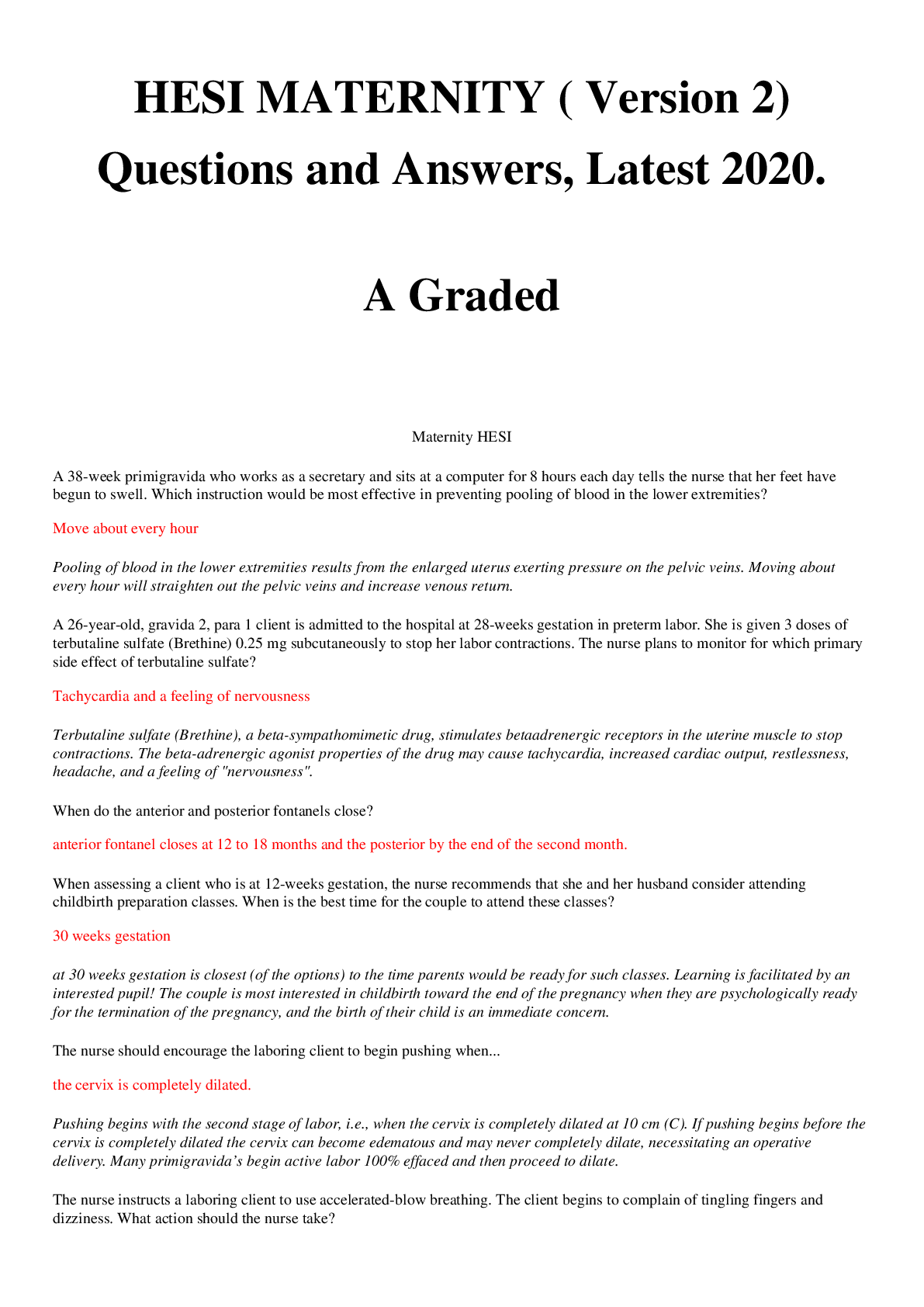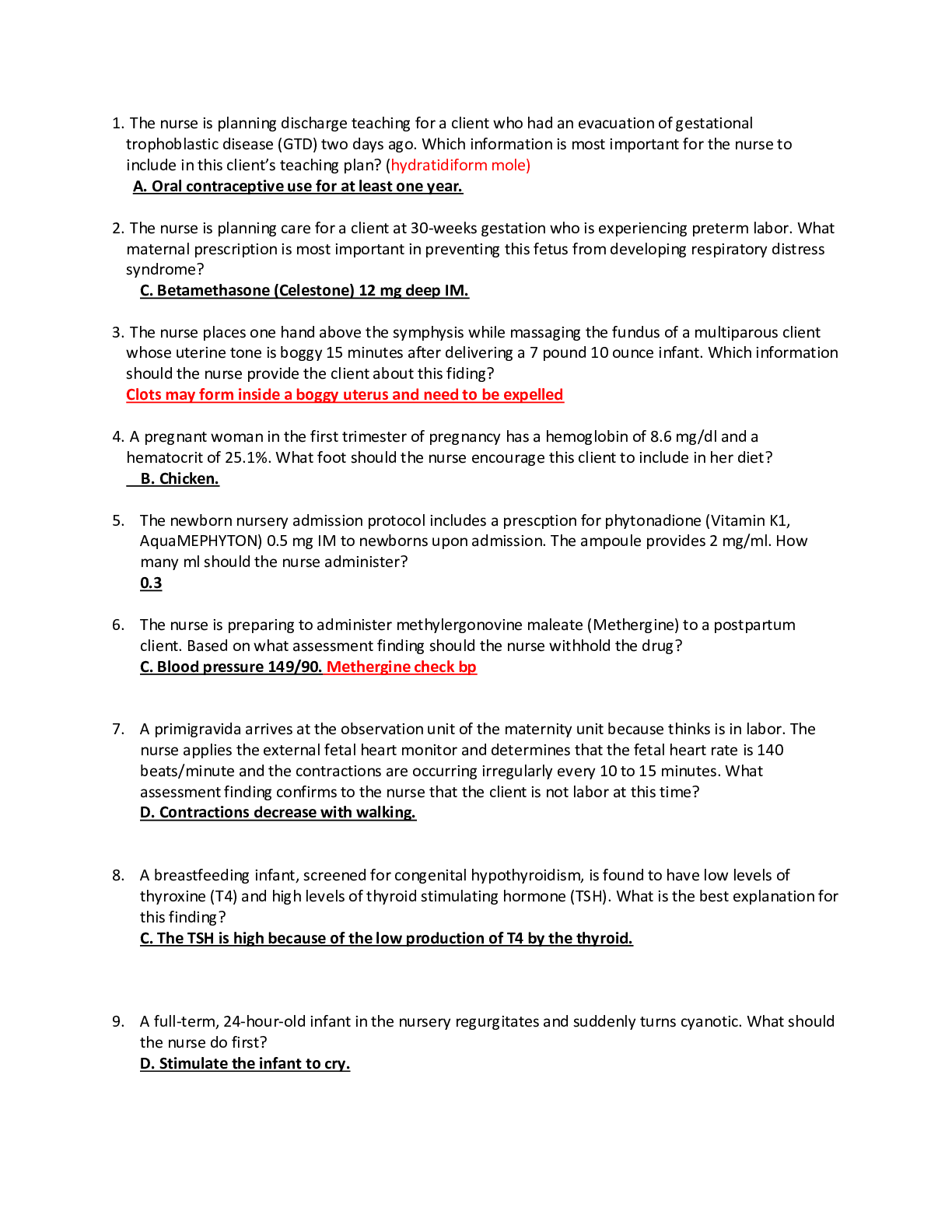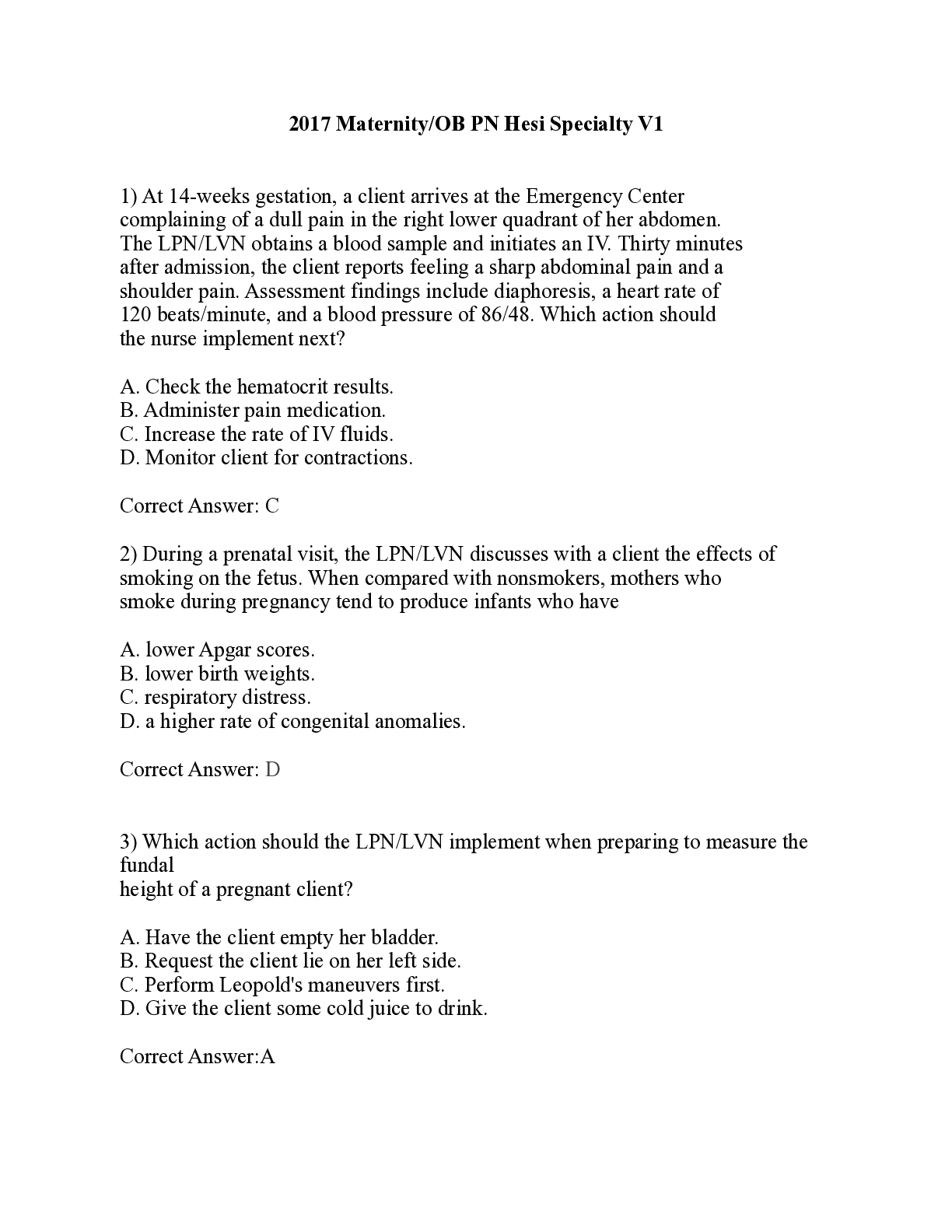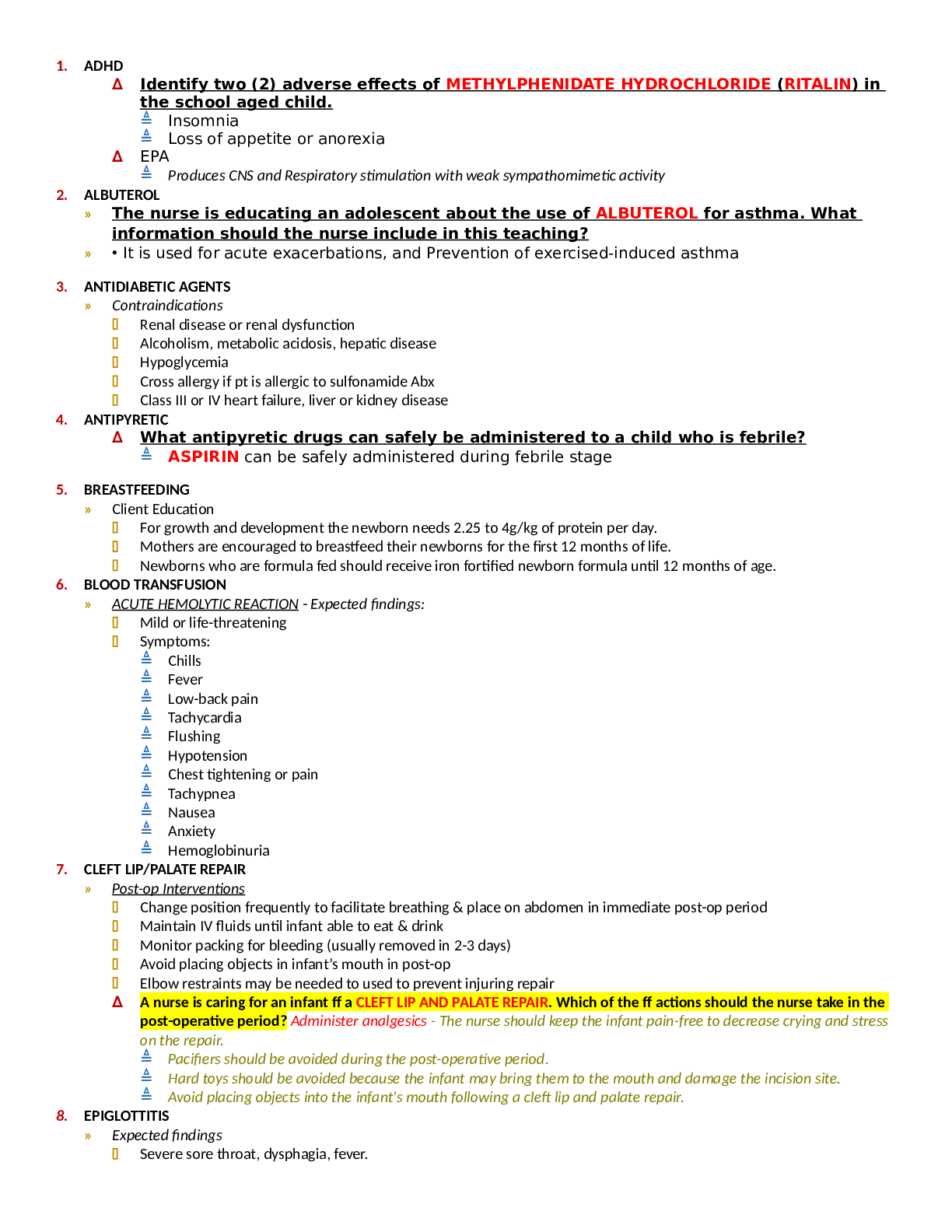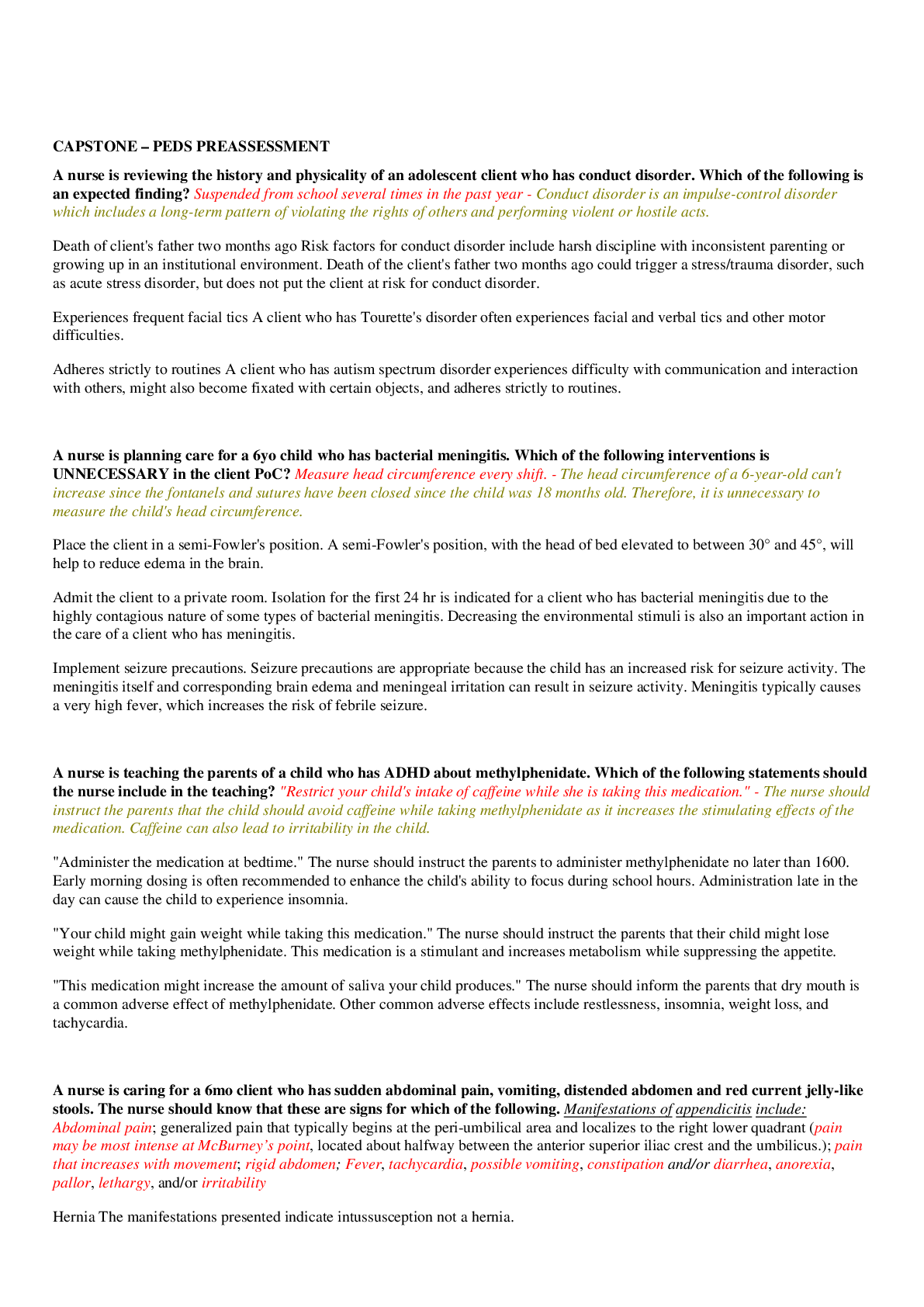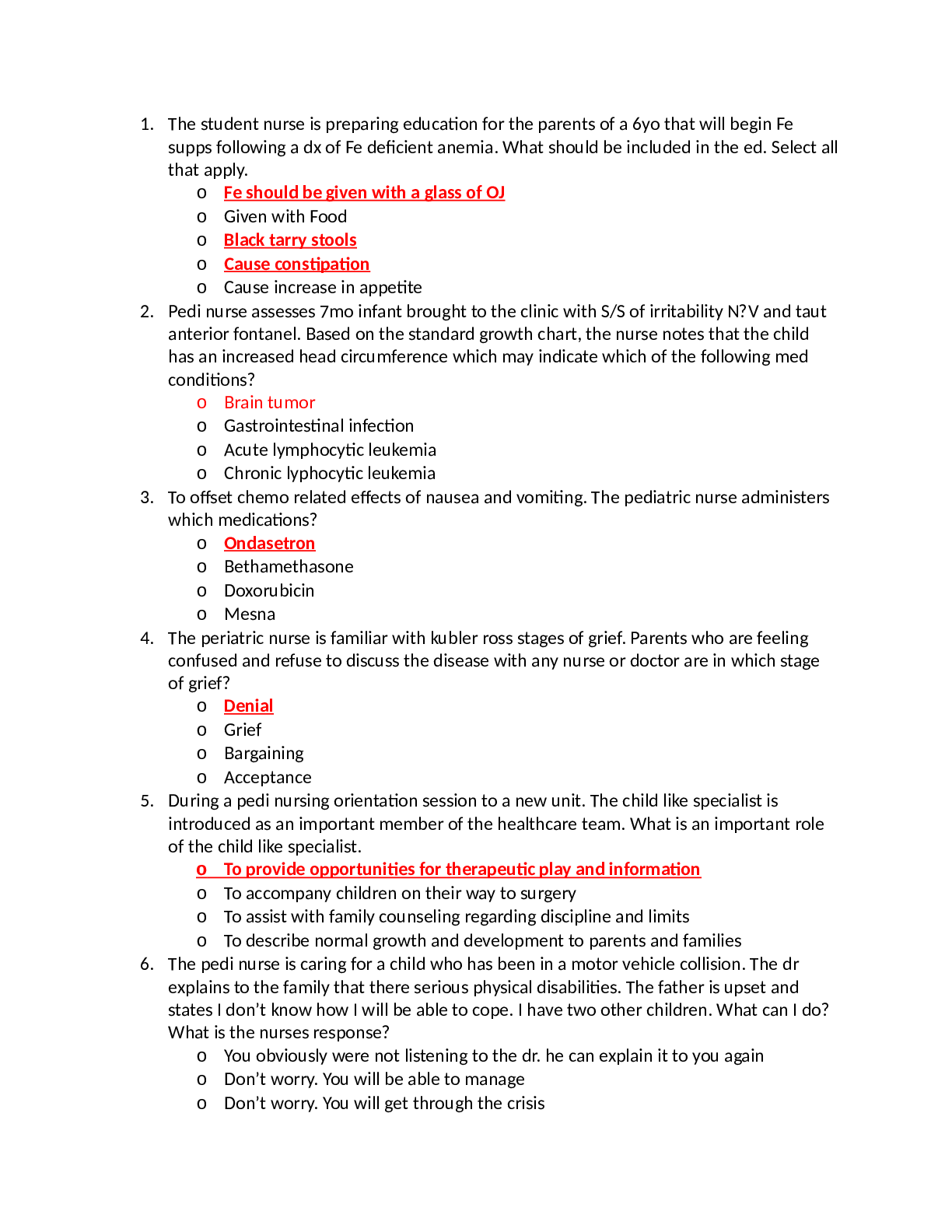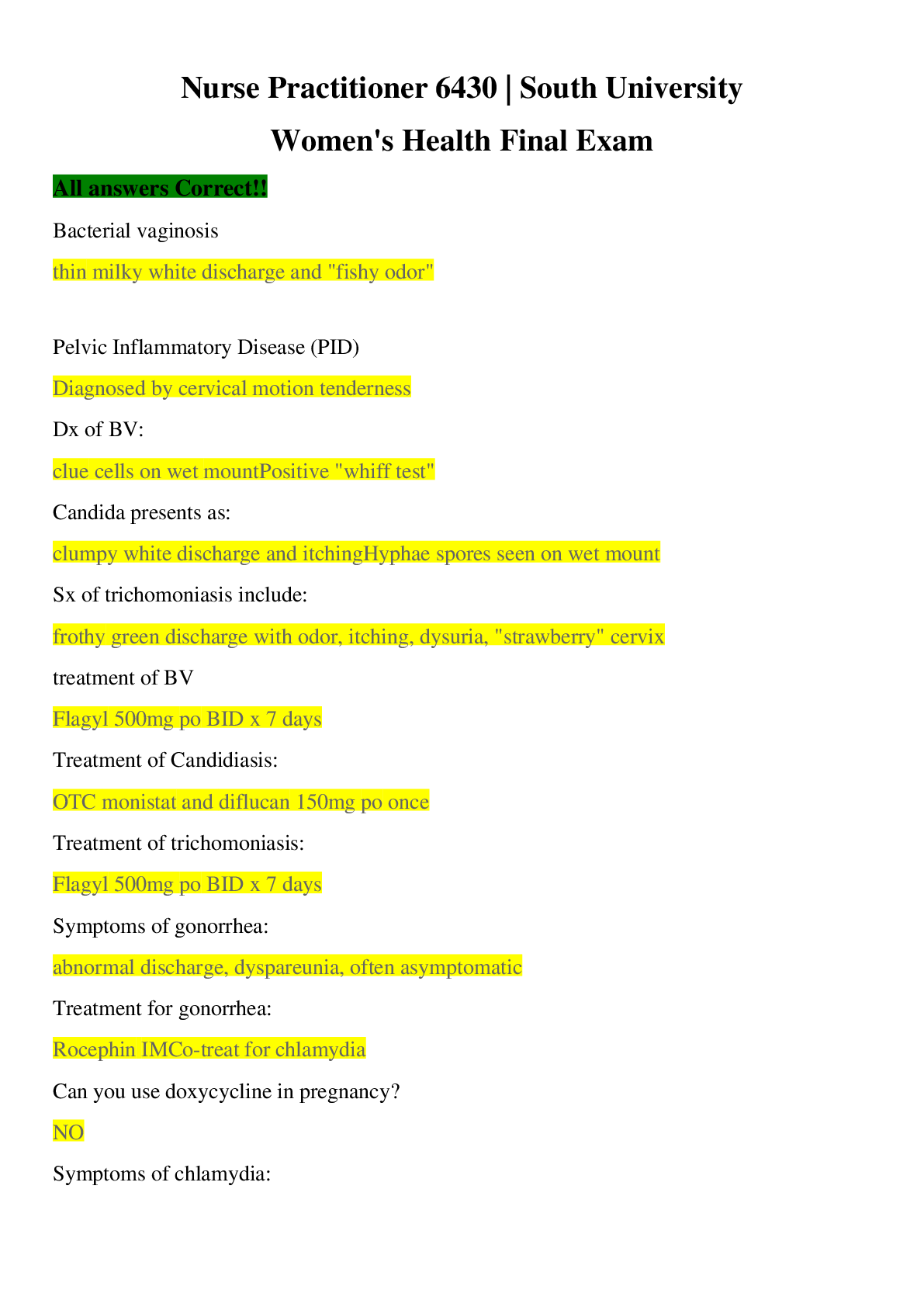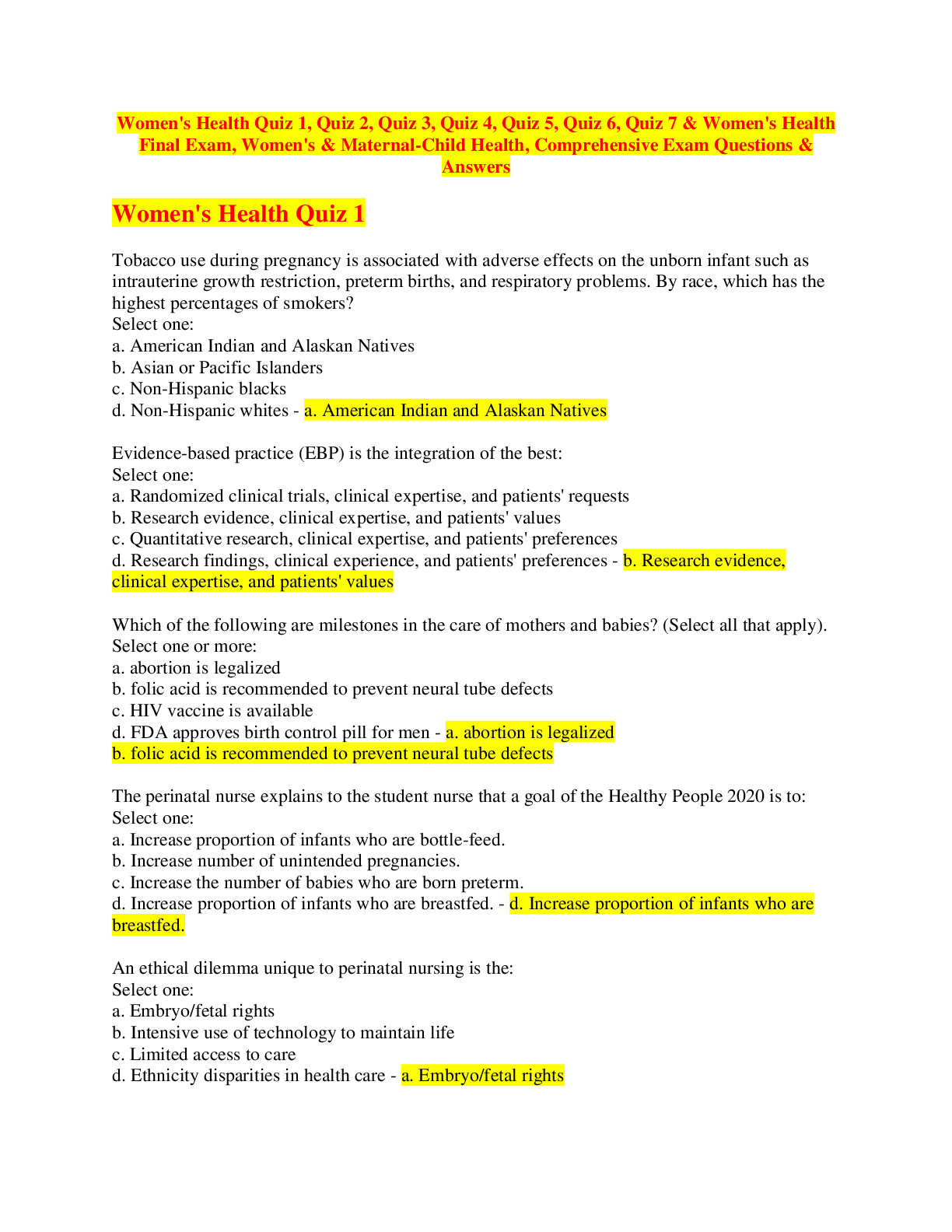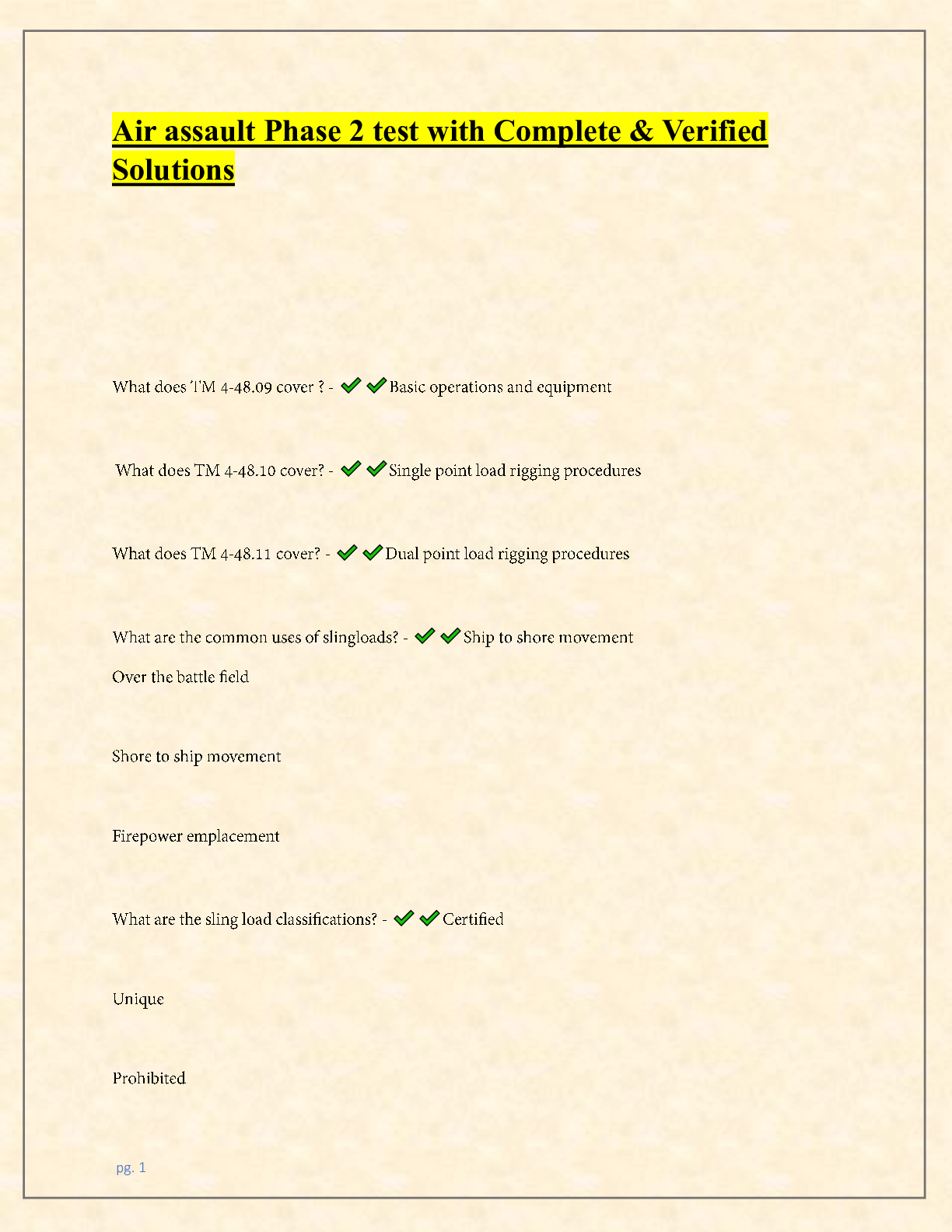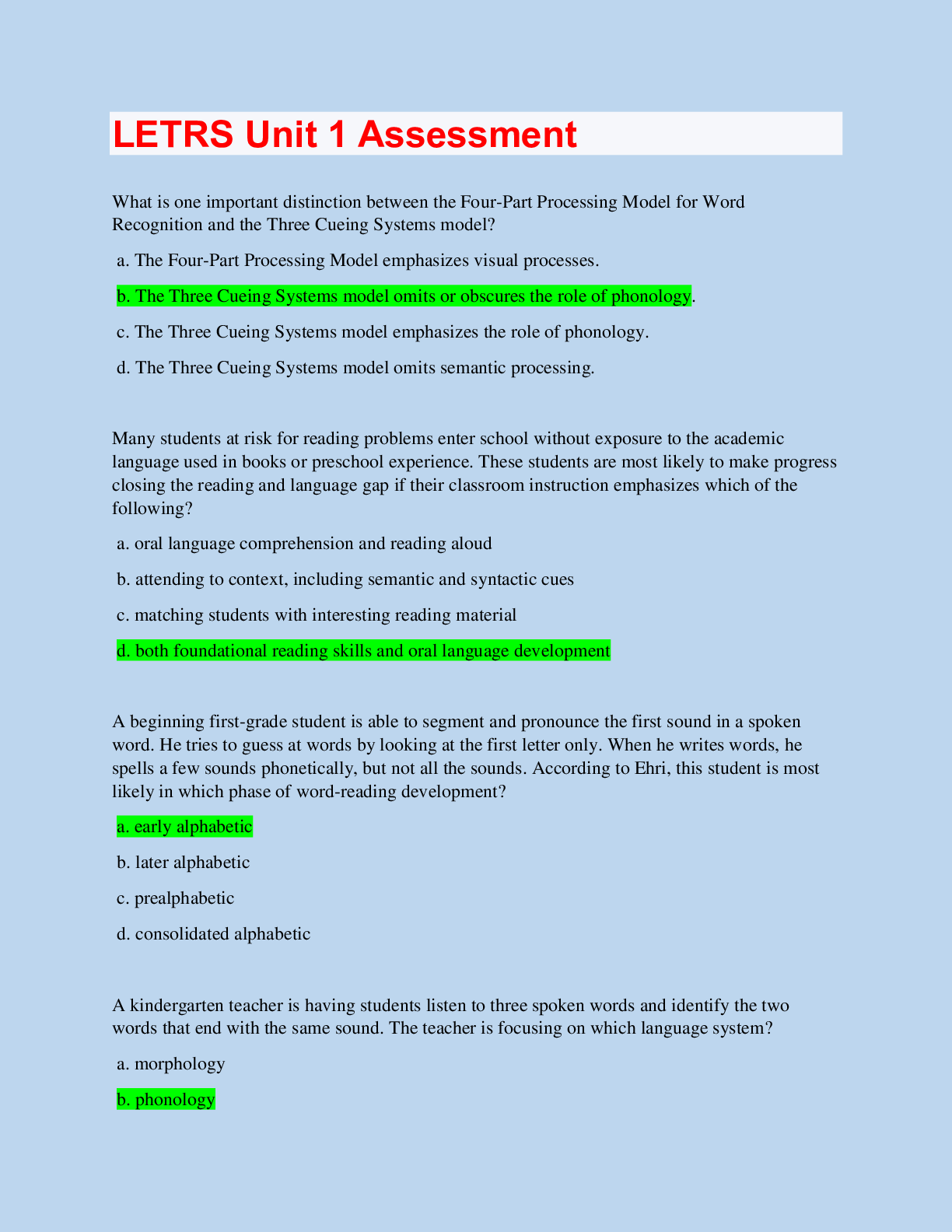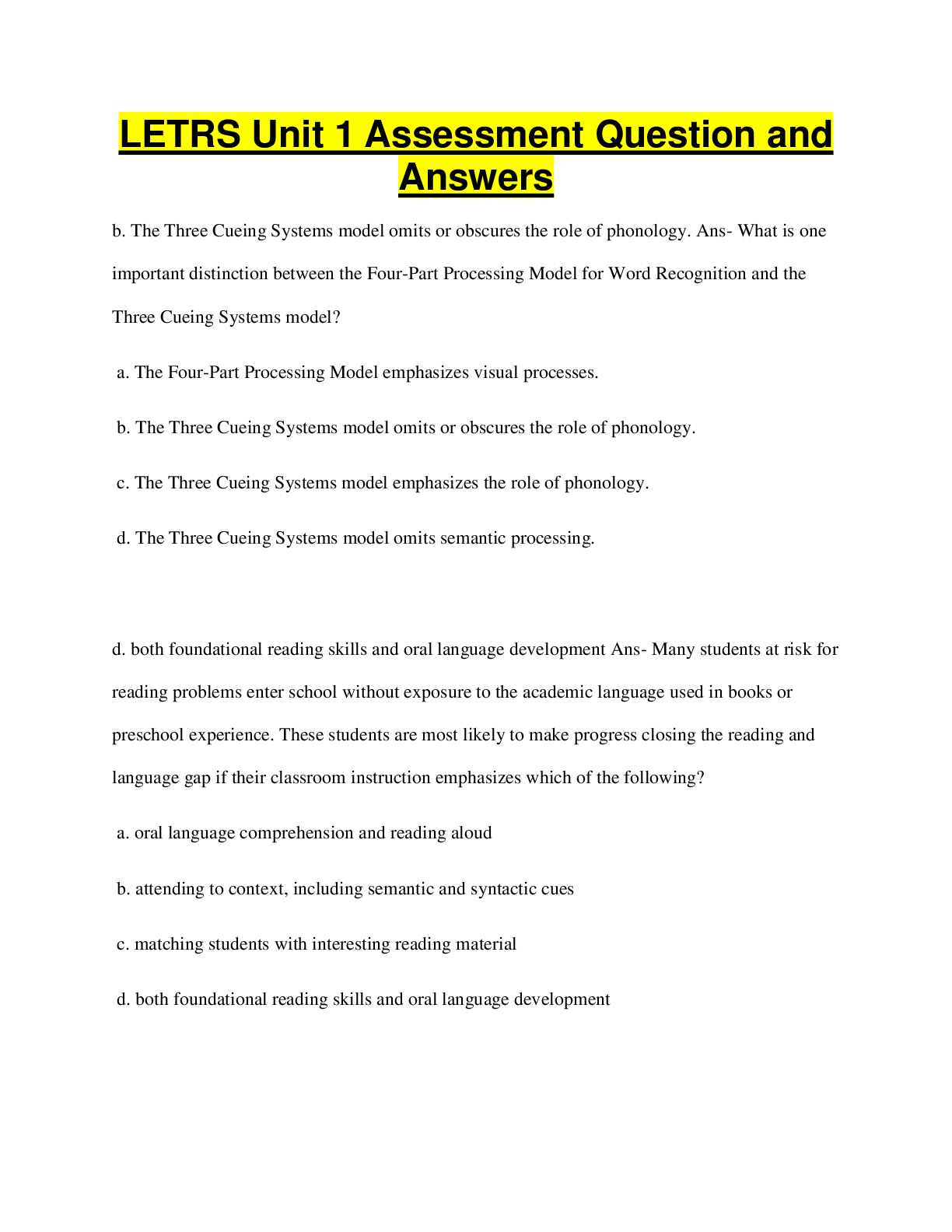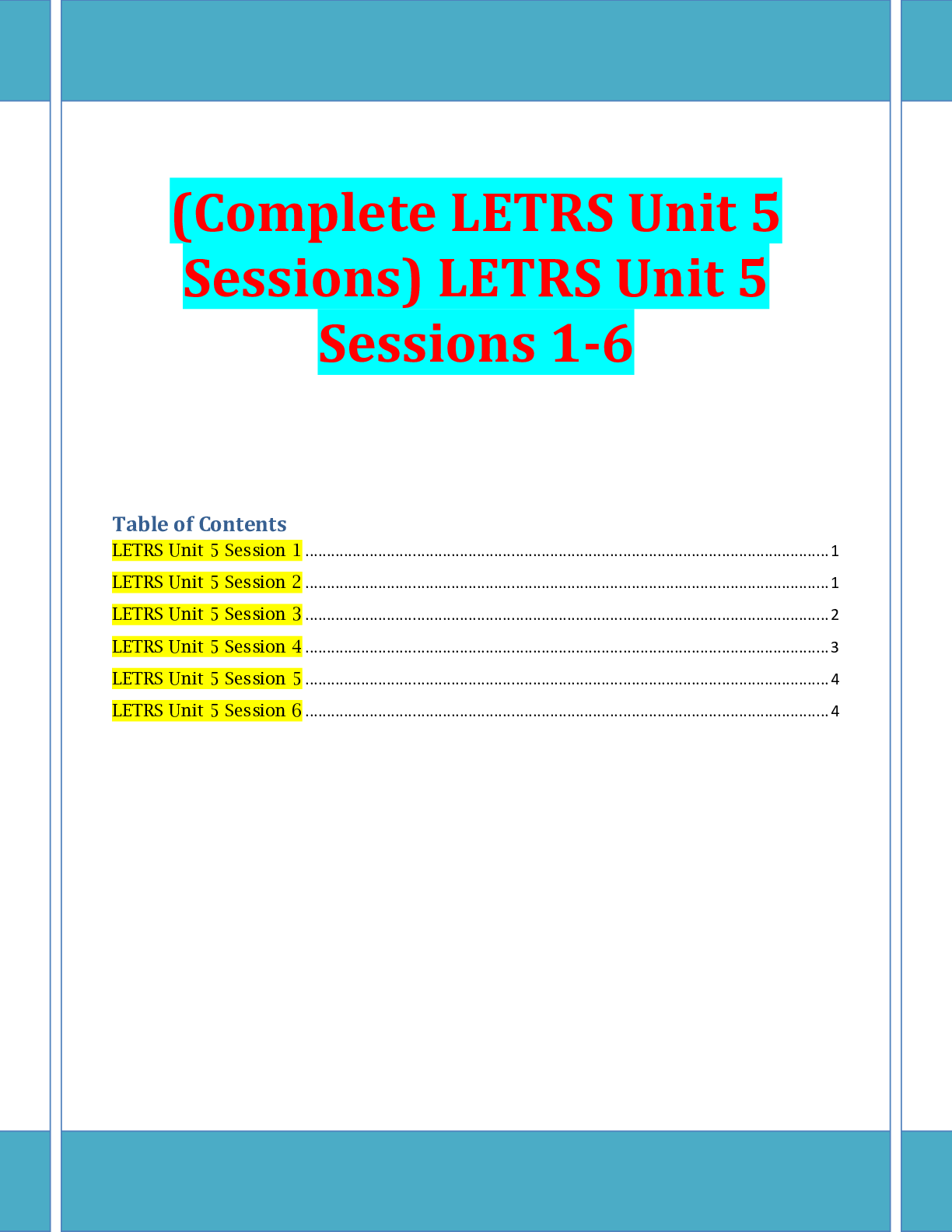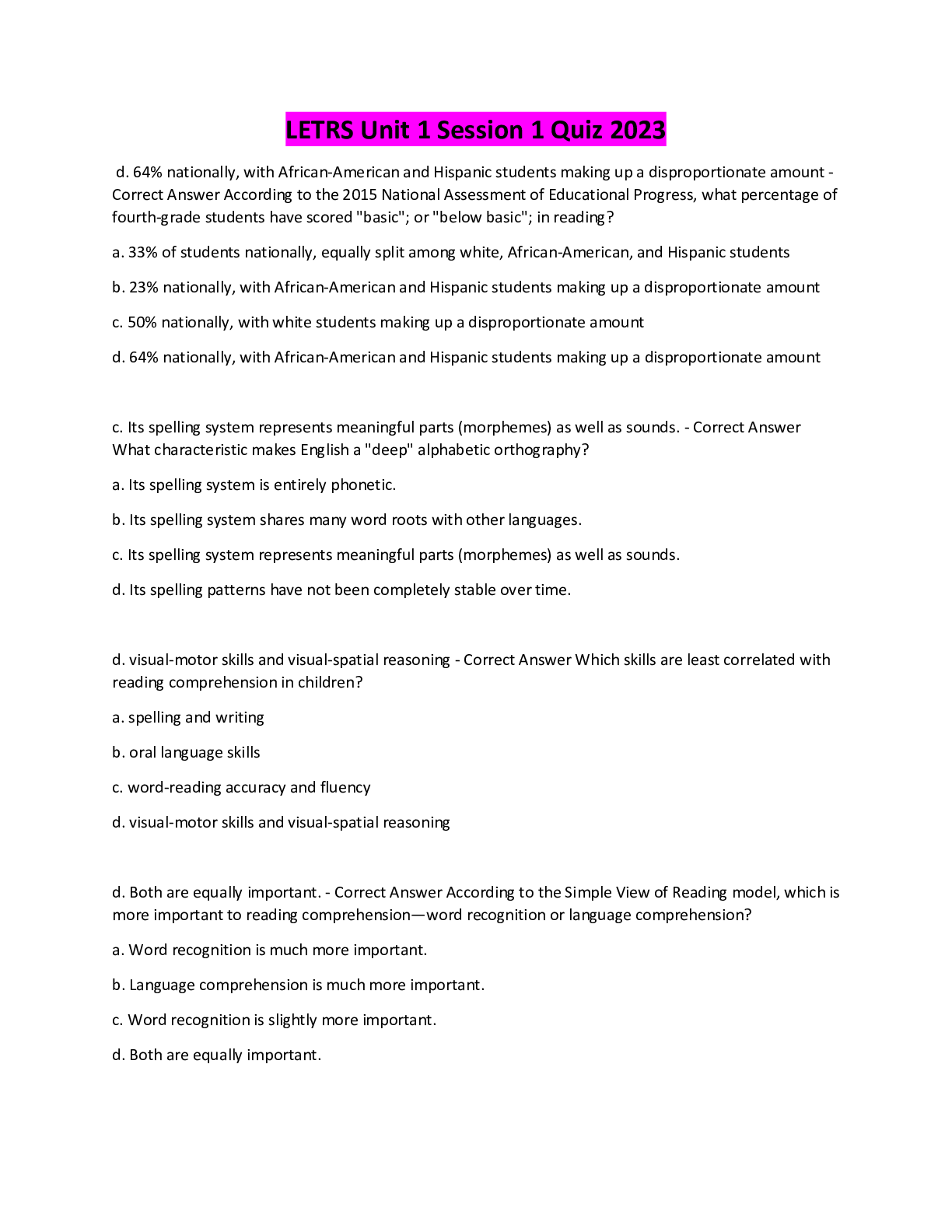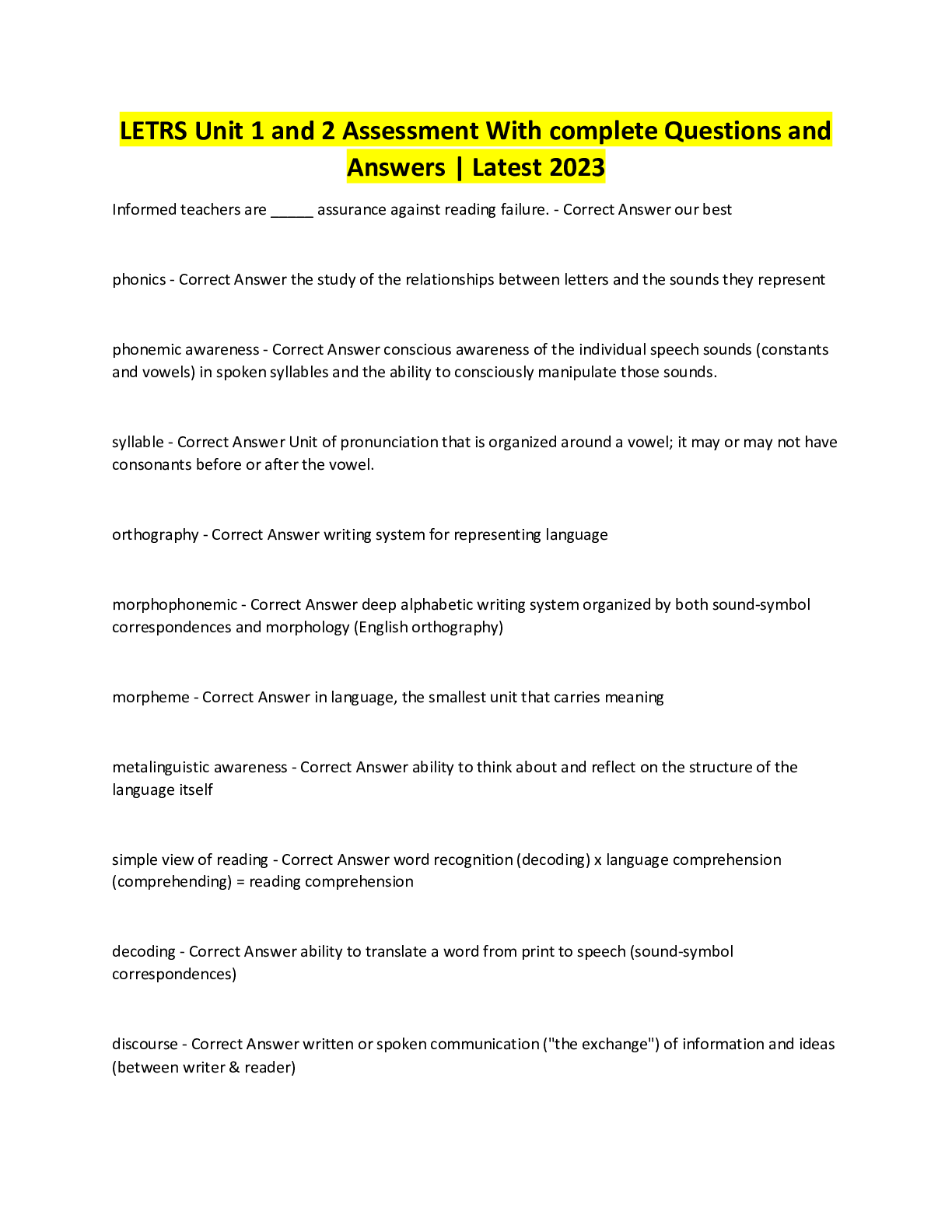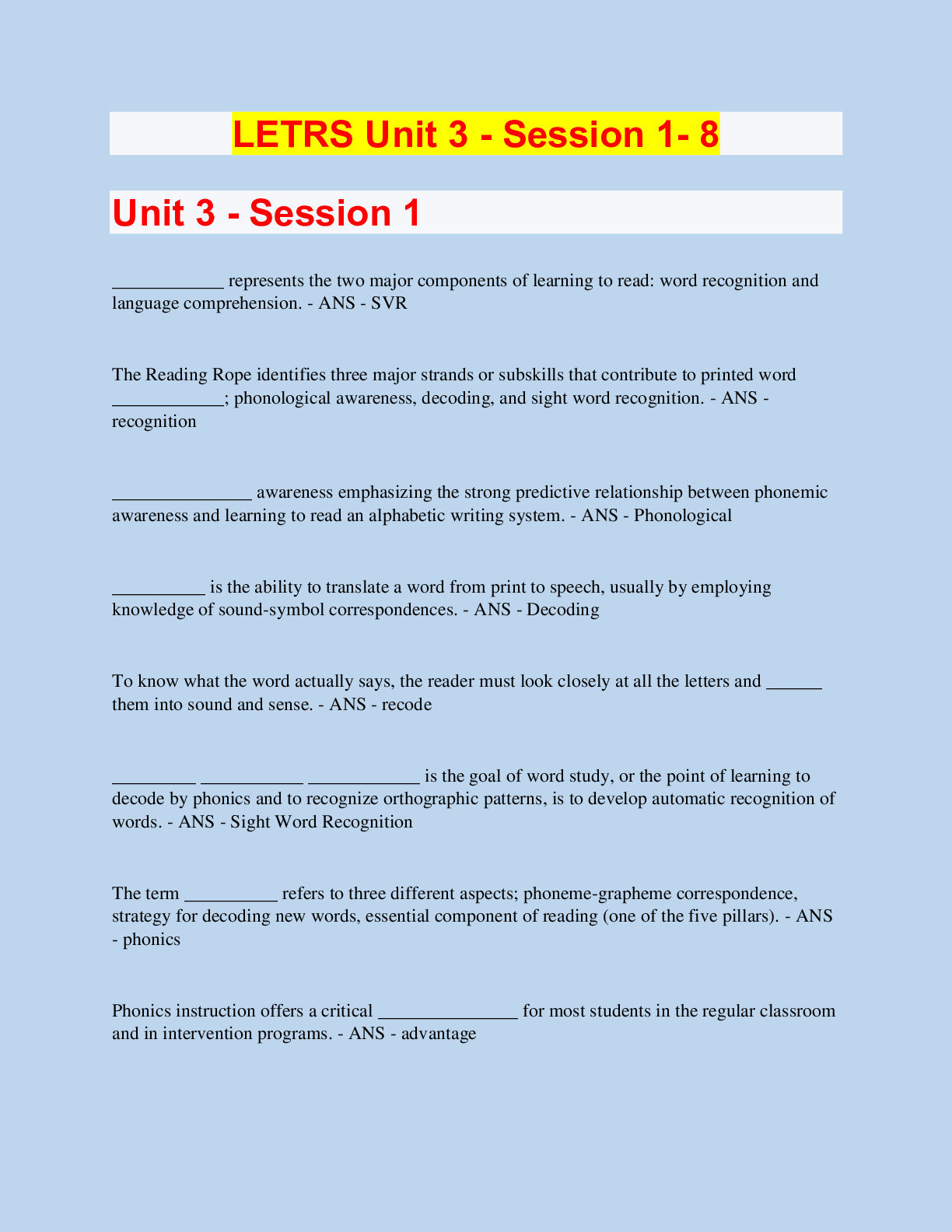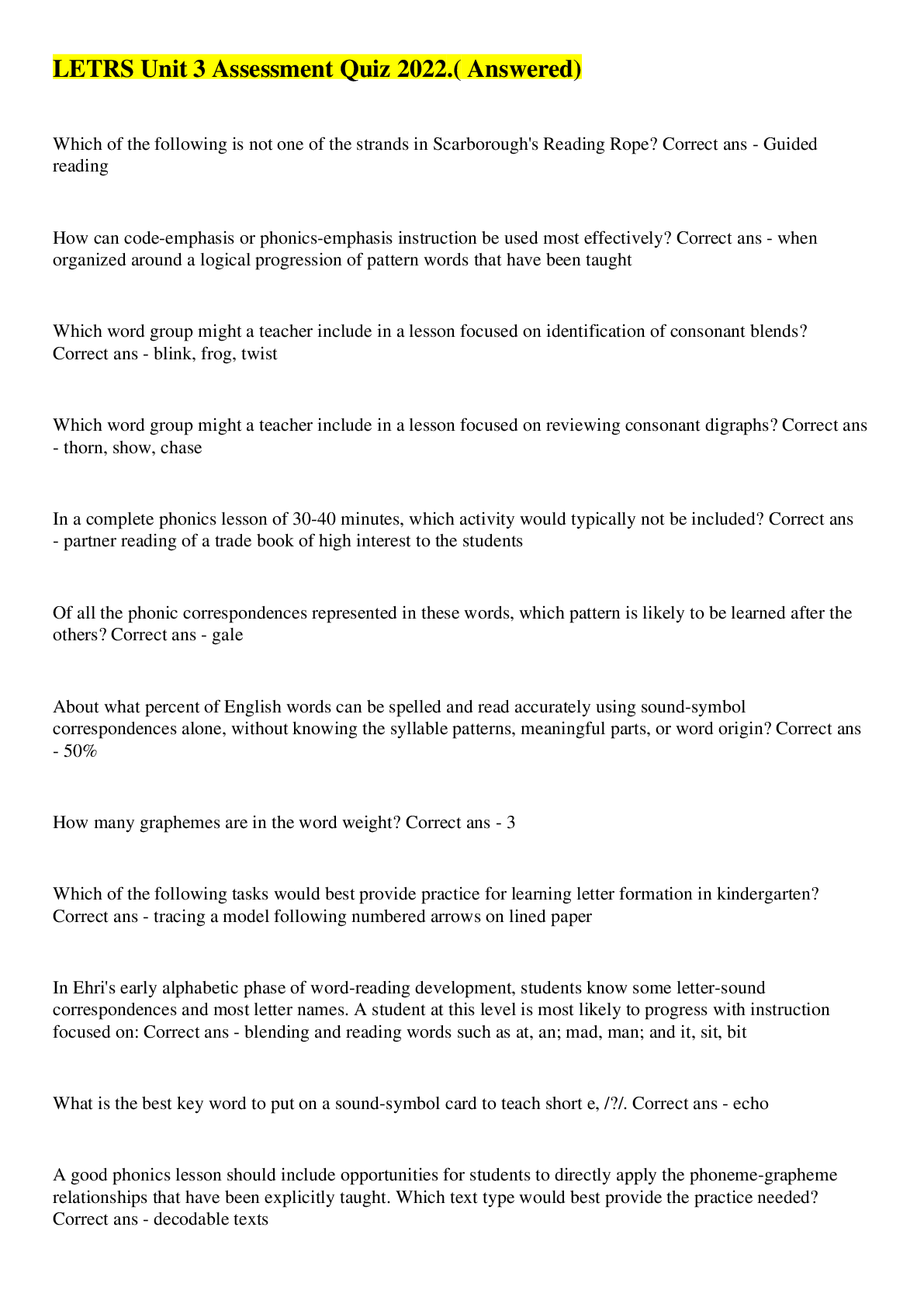Health Care > EXAM > ATI Community Health Final Exam, Chapter 22: Veterans Health With Questions And Answers. (All)
ATI Community Health Final Exam, Chapter 22: Veterans Health With Questions And Answers.
Document Content and Description Below
ATI Community Health Final Exam, Chapter 22: Veterans Health With Questions And Answers.MULTIPLE CHOICE 1. Which person meets the legal definition of a veteran? a. A 32-year-old male who has been d... ishonorably discharged from the Army b. A 50-year-old female who retired from the Navy c. A 65-year-old male who served in the National Guard d. A 22-year-old female who is currently serving in the Air Force 2. Which is the largest branch of the U.S. military? a. Navy b. Marine Corps c. Coast Guard d. Army 3. A client is describing the time period that he served in the National Guard. Which statement would he be most likely to make? a. “I completed monthly drills and 2-week annual trainings.” b. “I achieved the rank of officer and was promoted to the U.S. Army.” c. “I served overseas based on decisions made by the federal government.” d. “I selected Japan as my destination for my overseas tour of duty.” 4. A veteran is receiving veteran’s health care benefits. Which department directly coordinates these benefits? a. Veterans Benefits Administration (VBA) b. Veterans Health Administration (VHA) c. U.S. Department of Veterans Affairs (VA) d. Civilian Health and Medical Program of the Department of Veteran’s Affairs (CHAMPVA) 5. A nurse is interviewing a client to determine if she is eligible for VA benefits. Which question would assist the nurse in determining the requirement of service? a. “Did you serve active duty for 24 consecutive months?” b. “Which branch of the military service did you serve?” c. “Were you dishonorably discharged?” d. “How long has it been since you left the military?” 6. A client reports hearing loss and tinnitus following military duty in the Gulf War. Which term would best describe this client’s injury? a. Posttraumatic stress disorder b. Polytrauma c. Traumatic brain injury d. Service-connected disability 7. A veteran tells the nurse that he hates the VA health insurance program and wishes that he would be allowed to see the local doctor instead of traveling to the VA clinic. Which statement would be most appropriate to be made by the nurse? a. “I will check to see if your local doctor can be added to the list of approved providers.” b. “Yes, you pay premiums for this health insurance and should be able to have a choose what providers you see.” c. “The VA does not provide health insurance, rather this is a benefit that you receive for compensation for your service to our country.” d. “The VA provides different benefit plans. Let me see if the local doctor is a provider on a different benefit plan.” 8. A veteran has been diagnosed with an immersion foot injury. Which finding should the nurse anticipate when completing an assessment on the client? a. A foot that is deformed b. A foot that is unable to tolerate immersion in water c. A foot that the client is unable to bear weight on d. A foot that has occasional numbness 9. A veteran has recently been diagnosed with posttraumatic stress disorder (PTSD). Which information obtained from the client during a health history would align with this diagnosis? a. The client reports that he has a history of hypertension and hyperlipidemia. b. The client states that he served as a sniper during the Gulf War. c. The client states that he was stationed in Japan. d. The client reports that his wife has a substance abuse problem. 10. Which statement about military sexual trauma (MST) is accurate? a. MST is more common among male veterans. b. The majority of women who report MST state the perpetrator was an intimate partner. c. An Army veteran is at greatest risk to report MST. d. Insomnia is more severe among veterans who report a history of MST. 11. A nurse is caring for a veteran who has suffered a polytraumatic injury. Which would be the primary consideration for the nurse when working with this client? a. Use of an assistive device for ambulation may be necessary. b. Diagnosis of posttraumatic stress disorder will be likely. c. Physical and cognitive abilities to complete ADLs independently may be lacking. d. A psychiatric referral will be needed. 12. Which is the most prevalent type of substance use problem among male and female veterans? a. Binge drinking b. Overuse of prescription drugs c. Marijuana use d. Use of smokeless tobacco [Show More]
Last updated: 1 year ago
Preview 1 out of 50 pages

Reviews( 0 )
Document information
Connected school, study & course
About the document
Uploaded On
Dec 02, 2022
Number of pages
50
Written in
Additional information
This document has been written for:
Uploaded
Dec 02, 2022
Downloads
0
Views
51


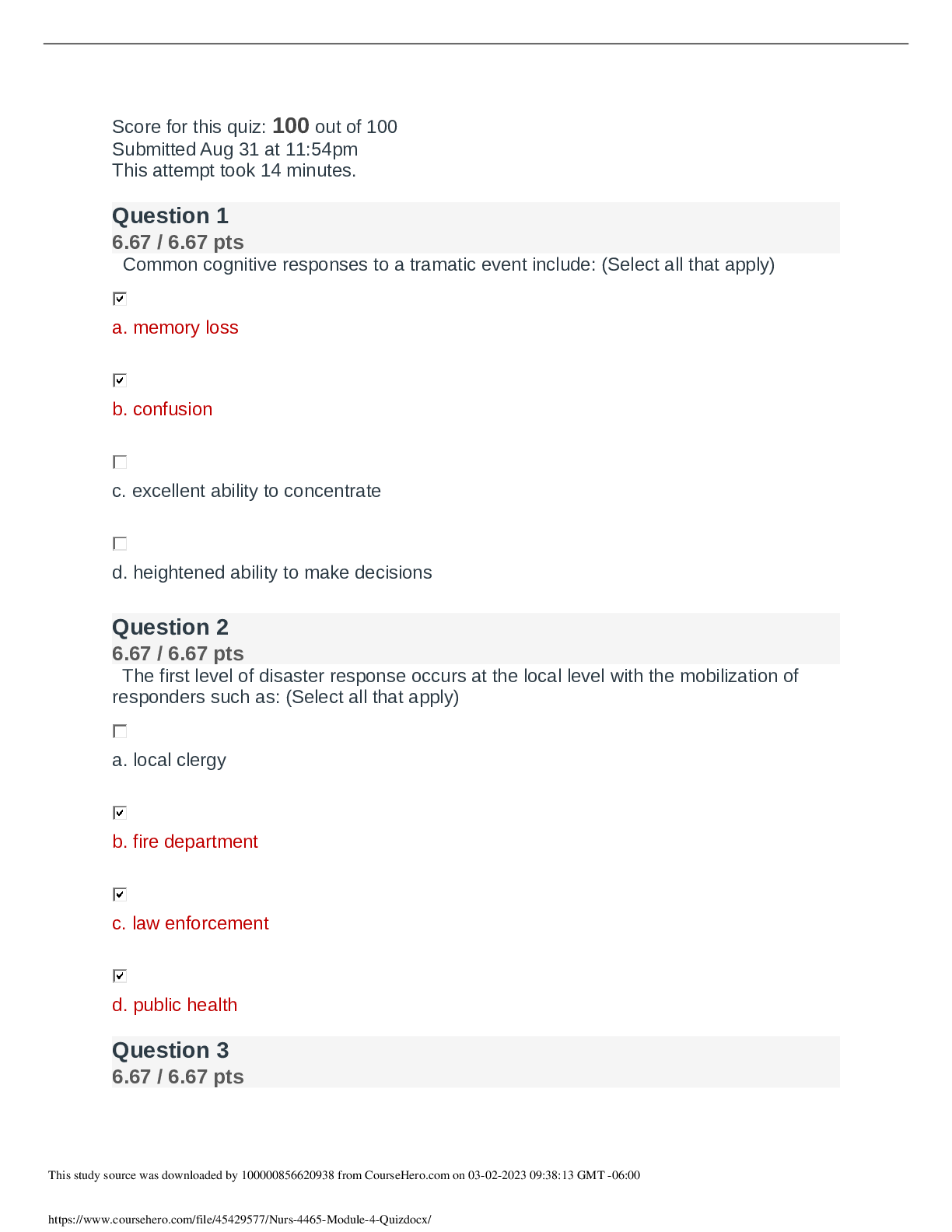
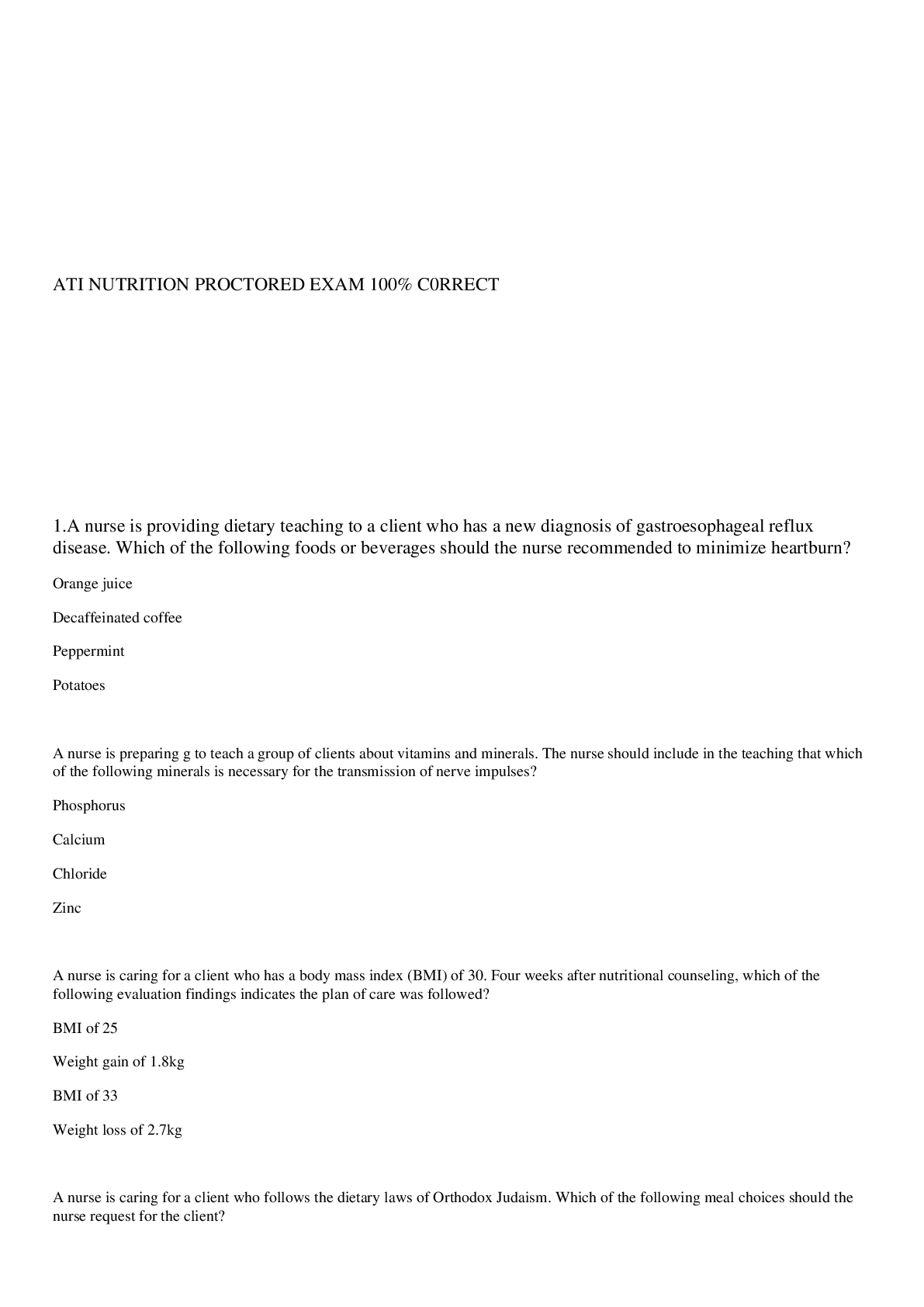
.png)
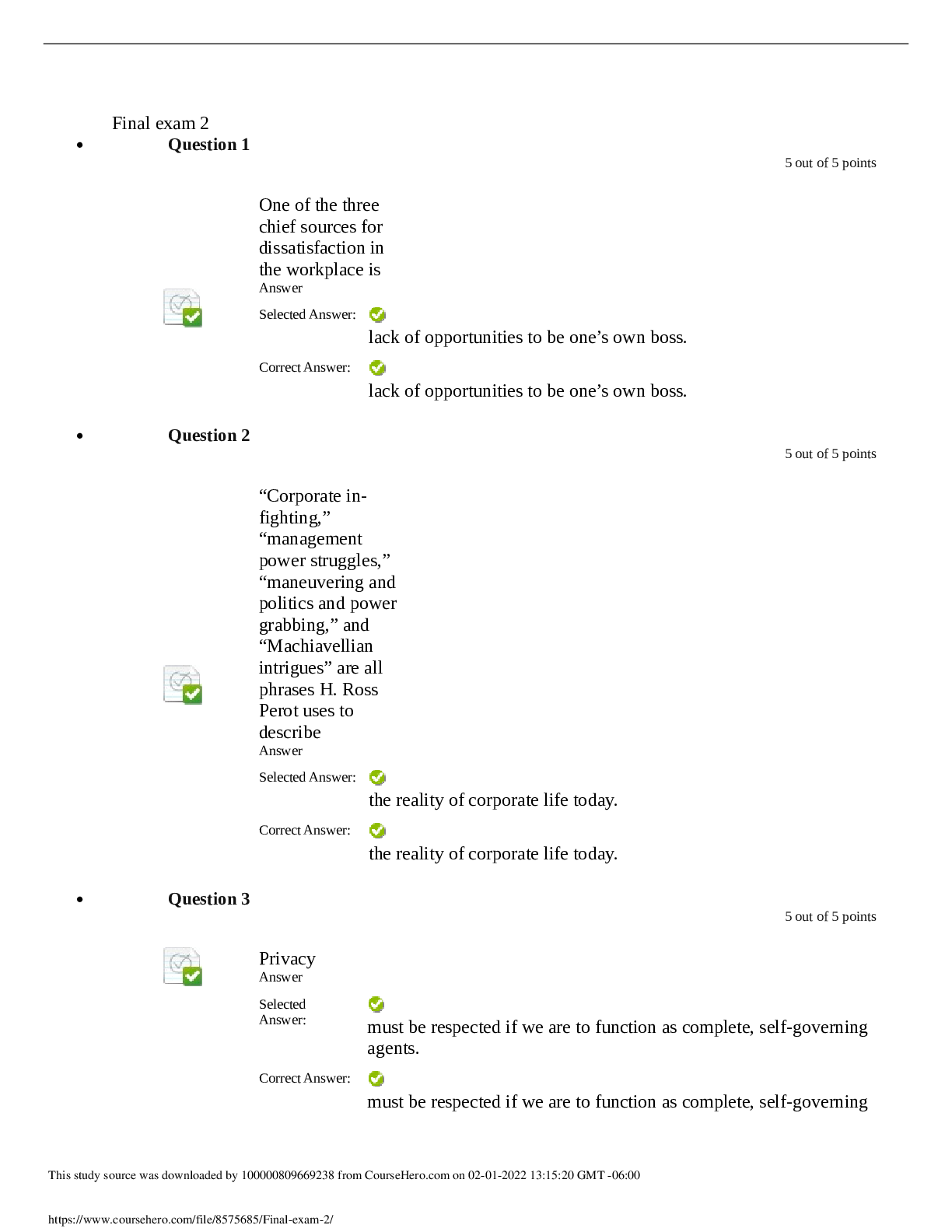
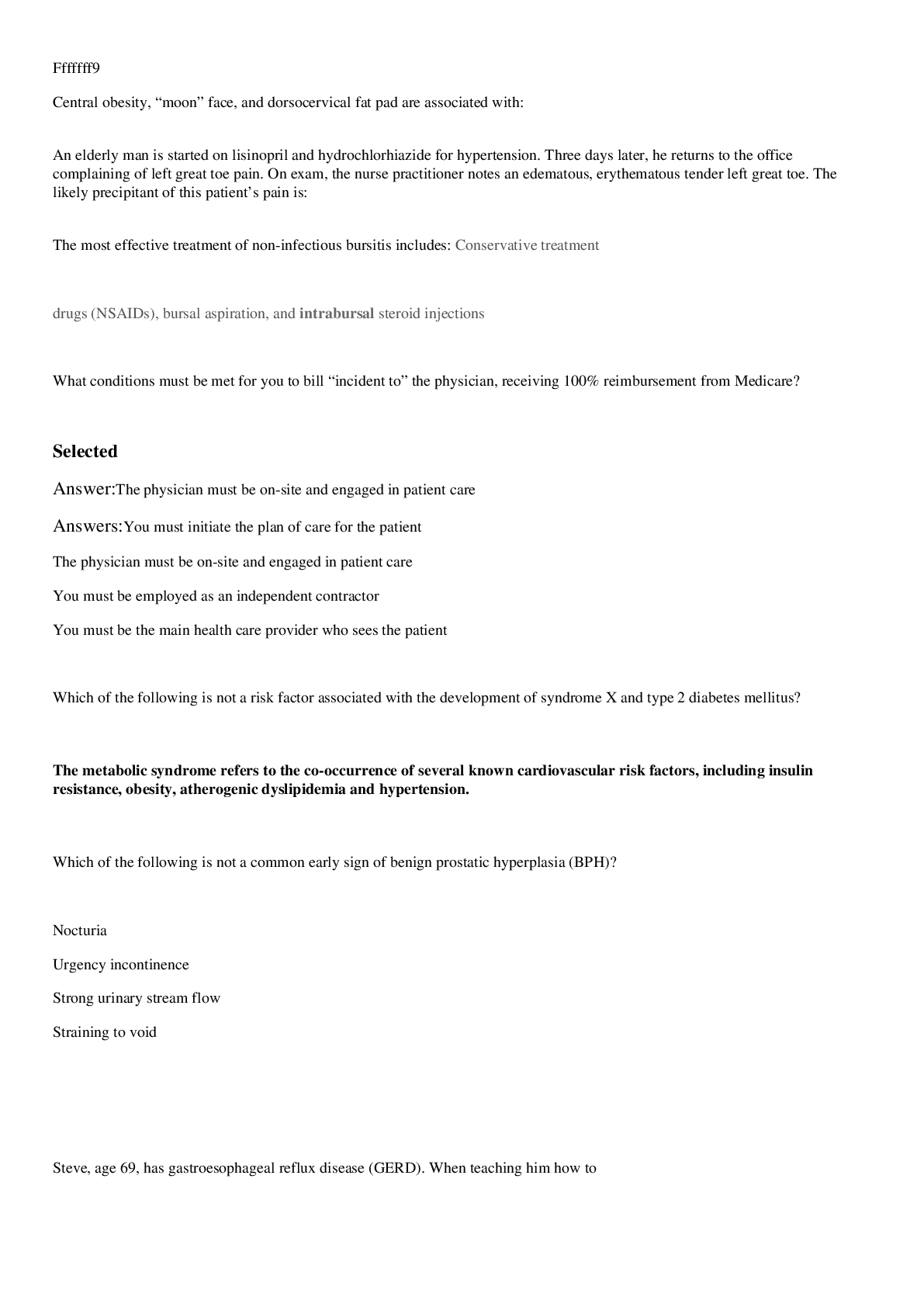

.png)
